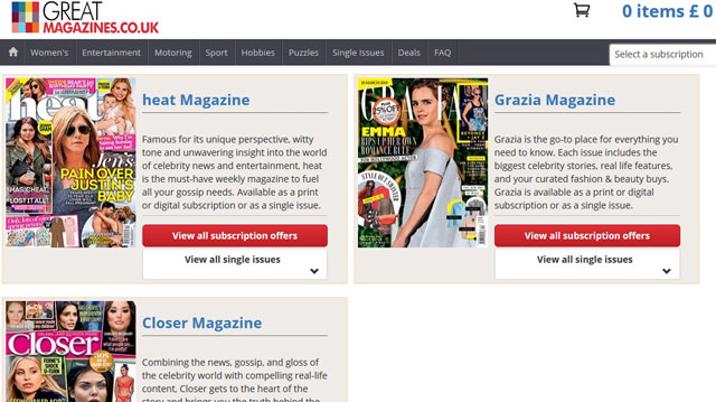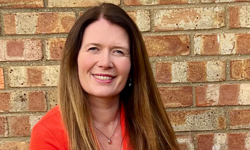
I’m going to change the flavour of things this issue and talk about something that’s a tad out of my comfort zone (cue the drum rolls!).
Yep, I’m going to talk eCommerce strategy. Which, let’s face it, is more important than ever to our future success in the publishing world. Stating the obvious, you can have the best product in the world, but if you can’t sell it online because no-one knows it exists – or because the user experience of actually attempting to buy it on your site is so awful – then you don’t really have a business.
I’m not ashamed to admit that I struggle to write authoritatively about the technicalities of eCommerce. It’s not really my area of expertise. So, to get more of an insight into how we sell our magazines direct to consumers via our own platform, the Great Magazines website, I caught up with our head of acquisition, Leah Faulkner, for lunch one day. My aim? Simple! To see what she’s up to strategically and how her side of the business has been doing.
Great Magazines has been Bauer’s principle online sales platform for many years now. I’d hazard a guess that it’s been around since the dotcom boom. Thus, it’s a bit of a legacy site, which presents problems in itself, but that’s a conversation for another day.
We sell all our magazine portfolio there. You can buy single issues in print, or digital. You can buy bookazines and specials. And most importantly of all, you can buy subscriptions – to print, to digital, and packages that cover the two. And it’s Leah that runs the strategy behind the acquisition and eCommerce elements of the site.
“I’ll chat with you if you buy me a large peppermint tea,” she said when I asked her if she wouldn’t mind being interviewed for my column. Deal. I even bought one for myself and, while supping on these, we chatted for an hour over a lunchbreak about everything that she does and how she’s managed to grow the business over the last twelve months or so.
“A lot of what we do is just common-sense stuff,” she begins, modestly. “We focus on mobile. The site is responsive. We try and keep up with changes to Google’s search algorithms. And we make it as easy as possible to find what you want and pay for it. And we offer the ability to pay using direct debit, credit or debit card, or PayPal, which covers most customers’ needs.”
Common-sense stuff indeed, I think, but let’s get into some of the detail here. There’s a lot more to it than just saying ‘we focus on mobile’. Isn’t there?
Leah talks fast and is seldom stuck for words. “Of course!” is the instant retort. “For us now, mobile has become the biggest source of traffic on Great Magazines. Making the site device responsive to suit was crucial.”
But is mobile the number-one source of transactions?
“No, that remains the desktop. But mobile transaction numbers are growing exponentially and will overtake desktop. People weren’t always entirely happy paying via their phones. They saw it as a security risk. But that’s not the case anymore. It wasn’t so long ago that you’d only use your mobile to text friends and make phone calls. But now… now the phone is your main way of shopping, communication, research, browsing and reading content. It’s your bank, your map, your contacts list, your personal computer – and that’s not going to change any time soon.”
I nod in agreement and think of Moore’s Law. Just before the millennium, you were rad if you had an Ericsson T10 with a flip microphone and a tiny 101x33px resolution screen. Now? Well, look at the iPhone X. The advance in tech is staggering. If businesses are to grow, mobile eCommerce has to be top of their strategic thinking.
“Most importantly,” continues Leah, “people are now comfortable using phones as bank cards. If you can make your eCommerce site mobile friendly, you’re going to sell more. It’s about UX and how you make the payments journey easier on a small screen.”
5 stages
How do you do that, I ask? Do you test the effectiveness of each stage from a UX perspective?
Leah answers: “There are five stages to purchase in the funnel currently. Each stage is closely monitored. If we see increased drop-off rates, then we find out why and optimise. We AB test, we multivariate test, just to see which layouts result in the most amount of people moving through to the next stage. It makes a big difference to conversion. A whole strategy is built around optimising the funnel.”
The analytics back up Leah’s claim. Since Great Magazines repositioned the payments journey in 2017 (later than she would have liked, but that’s legacy websites for you) and improved the UX, she’s seen a 36 per cent increase in subscription conversions solely from mobile devices.
Which translates into quite a lot of money.
“The acquisition team is depending on us to up our conversion rates,” she continues. “Fewer people are searching for magazine subscriptions online. The magazine industry in general is becoming less visible, whether that’s online, or in supermarkets, newsagents or garages. To grow the business, we have to make people aware we’re here and use new routes to drive them to the site. Of course, we have to optimise search, then optimise and test payment funnels. But we now have to prospect for new business, too.”
If your business is anything like the app business I manage, I say, you’ll keep getting problems cropping up all the time. You have to be on the ball.
“Always,” she says. “And that will never change. Google might make changes to its search algorithms that directly affect our search performance. For instance, they’ve just moved to a mobile-first indexing algorithm. The site will get a lesser score if content is hidden from mobile devices. So, you need to think how much of the journey you display openly and how much you display to the mobile user, without impacting your indexing. Finding the balance between SEO and mobile is now one of our biggest focusses.”
But if fewer people are searching for magazines online now, how do you move on from that? Do you run paid ad campaigns on social media platforms? Or perhaps, use social influencers to drive awareness?
“Yes, all of those things,” Leah says. “And they’re going to become more important. If search delivers less traffic, so we might have to conduct more PPC activity on Facebook, or Twitter. We might have to do more affiliate, prospecting and lead generation work. That might include paying social influencers in their specialist content areas to promote magazine subscriptions.”
“We’re having to think out of the box to generate awareness of magazines as a potential purchase that people might like to make. Where your audience is likely to come from next year, or in three years, will influence how you optimise your site and drive sales. That future may not be traditional search. The companies that anticipate what’s coming – see the future and launch a solution to suit – are the ones that will prosper.”












